The quest for a genuinely compact new car in North America is challenging, and finding a small electric vehicle (EV) adds another layer of complexity. Beyond the Fiat 500e and the MINI Electric, truly subcompact options are scarce, especially those offering a city-friendly size without compromising on range for longer journeys. Enter the Volvo Ex30, a subcompact electric crossover that has been eagerly anticipated, and is finally making its debut. Delays were expected, partly due to international trade dynamics, but the EX30 is now here to contend in the burgeoning EV market.
On paper, the Volvo EX30 appears to tick all the right boxes. Its dimensions are remarkably close to the Honda Fit, yet it boasts a driving range comparable to the base Ford Mustang Mach-E. Furthermore, its acceleration figures are surprisingly brisk. This review focuses on the single-motor Volvo EX30, the model anticipated to be the most popular in markets like the U.S., thanks to Volvo’s promise of a starting price just above $36,000, including destination fees. This announcement caused considerable excitement online, but what is the Volvo EX30 really like to live with day-to-day? We spent a week finding out.
[Full disclosure: Volvo Canada provided this EX30 for a week-long test drive, under the conditions of responsible use, maintaining a minimum 70 percent battery charge upon return, and providing an honest review.]
Volvo EX30: Core Specifications
Battery Pack: 65 kWh net capacity lithium-ion battery.
Drivetrain: Single-motor, rear-wheel-drive (RWD).
Power Output: 268 horsepower, 253 lb.-ft. of torque.
EPA Estimated Range: 260 miles.
Peak DC Fast Charging Rate: 153 kW.
Base MSRP (Canada): $56,470 CAD (including freight).
Price as Tested (Canada): $61,870 CAD (including freight).
The Rationale Behind the Volvo EX30
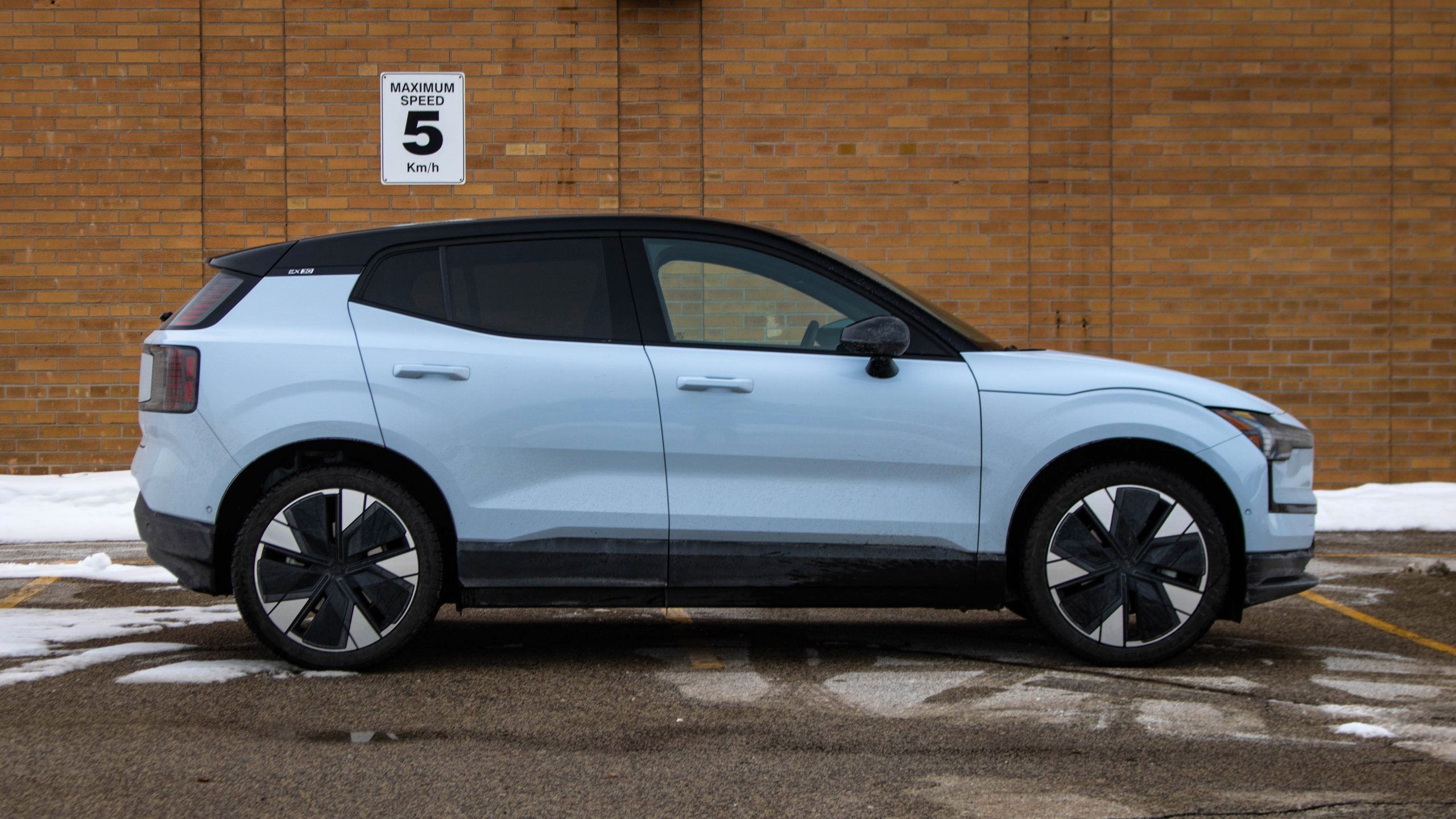 2025 Volvo EX30
2025 Volvo EX30
Volvo’s strategy in 2023 was clear: leverage its Geely ownership to introduce a premium yet affordable subcompact electric crossover to North America, aiming for a starting price under $37,000. The approach was to blend minimalist design with upscale aesthetics. This ambitious plan, however, faced immediate headwinds due to significant tariffs imposed on electric vehicles imported from China. In response, Volvo has adapted, shifting production to Belgium. While dual-motor Volvo EX30 models have begun reaching American dealerships, the single-motor variant, the focus of this review and anticipated for broader appeal, is expected to follow soon.
Exterior Design of the Volvo EX30: Small but Sophisticated
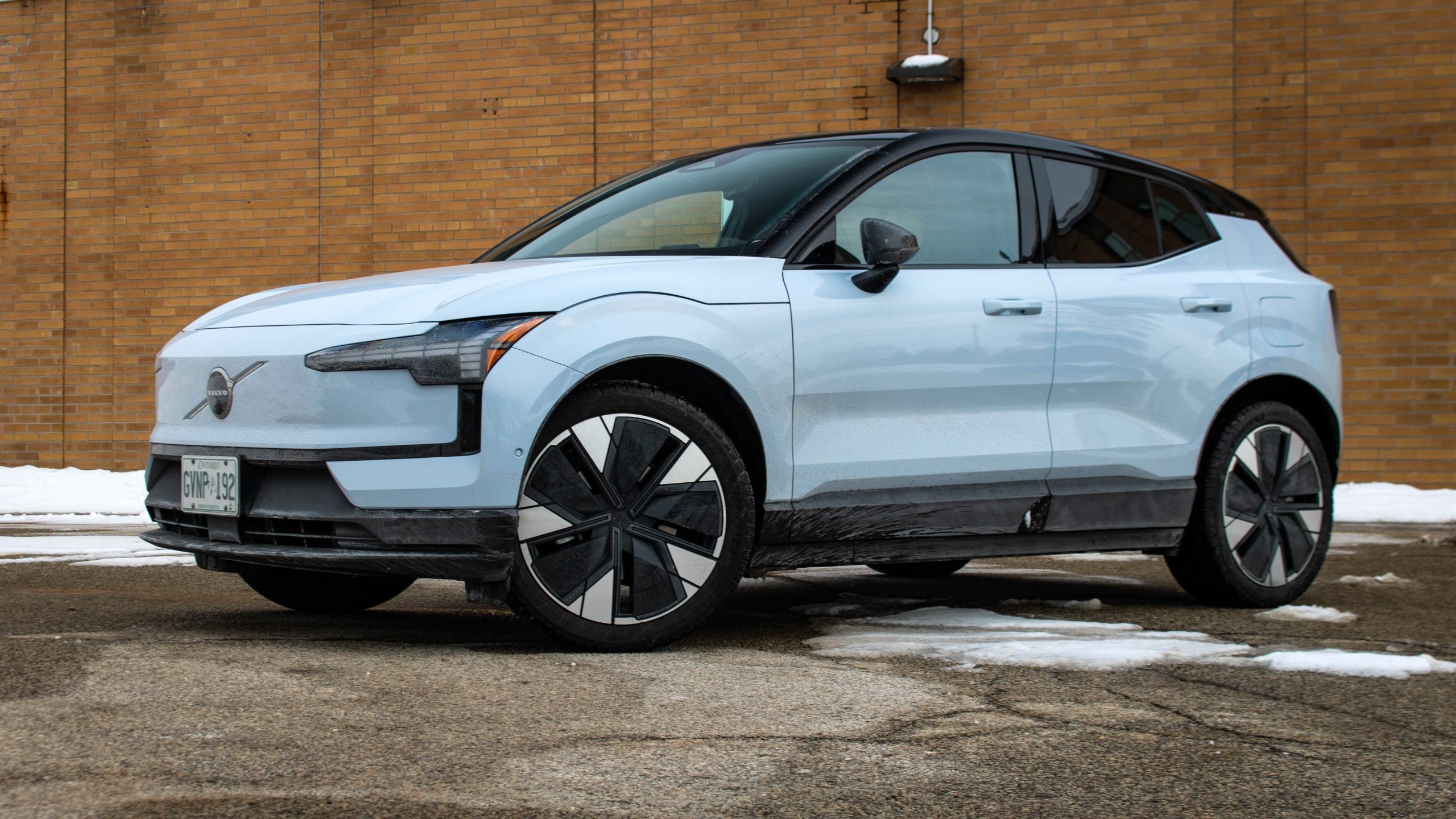 2025 Volvo EX30
2025 Volvo EX30
Approaching the Volvo EX30, its truly compact size immediately stands out, firmly placing it in the subcompact category. It is only marginally longer than a Jeep Renegade and comparable in size to the previous generation Hyundai Kona Electric. For a more mainstream comparison, the EX30 is notably shorter than a Toyota Corolla hatchback by over five inches, emphasizing its city-friendly footprint.
Despite its small dimensions, the Volvo EX30’s design language exudes confidence and sophistication. From the signature Volvo “Thor’s Hammer” LED headlights to its refined and uncluttered surfaces, the EX30 possesses a timeless elegance, akin to a classic navy blazer. It certainly avoids any impression of being cheaply made. The design incorporates detailed taillights, substantial door handles, and sharp body creases, all contributing to the perception of a genuine luxury vehicle, despite its entry-level positioning in the Volvo lineup.
Interior of the Volvo EX30: Minimalist and Modern
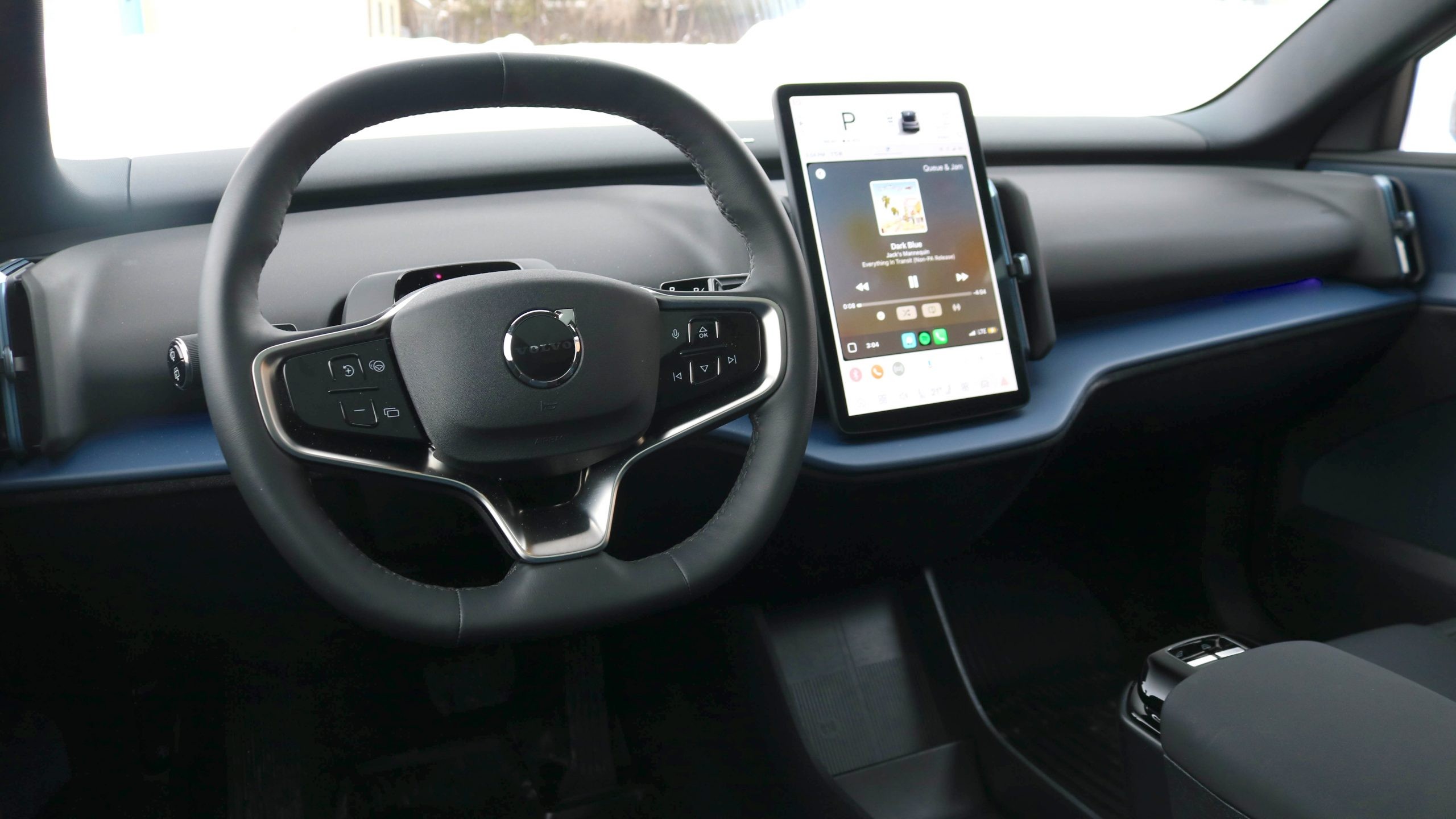 2025 Volvo EX30
2025 Volvo EX30
Stepping inside the Volvo EX30, the minimalist design philosophy becomes even more apparent. The key itself is a testament to this approach—a sleek, buttonless, glossy black fob, resembling a Tic Tac container. Proximity sensing unlocks the doors. Once inside, the interior is strikingly simple: seats and a single, prominent central touchscreen dominate the cabin.
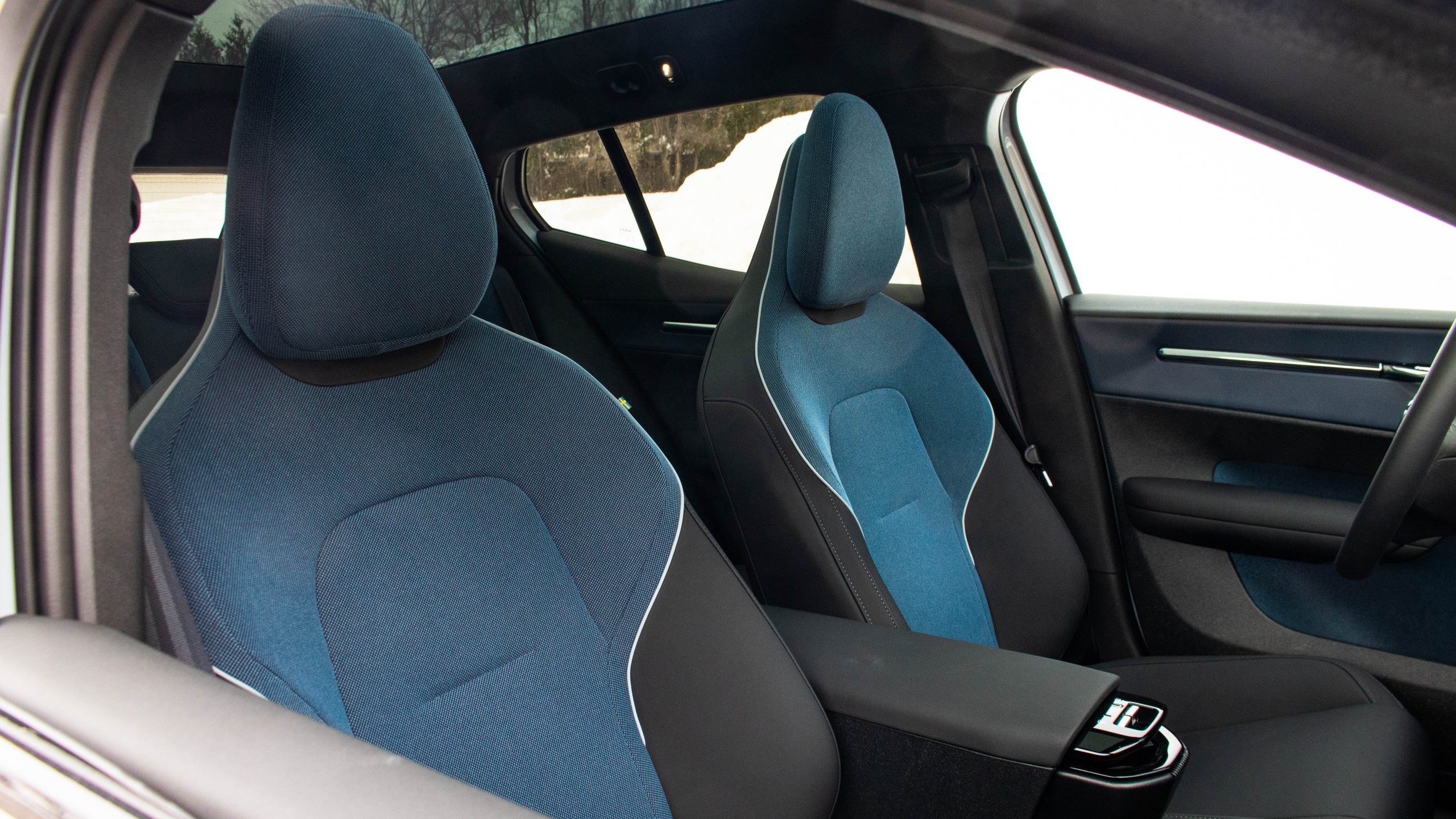 2025 Volvo EX30
2025 Volvo EX30
However, the Volvo EX30’s interior minimalism is not devoid of personality. The navy blue upholstery in our test vehicle provided a refreshing departure from the ubiquitous black interiors. Translucent trim on the air vents, playful confetti patterns on upper trim pieces, and a distinctive chipboard-like finish on the lower door panels inject a touch of retro-futuristic flair. Conversely, the elegant metallic interior door handles offer a mid-century modern aesthetic, appearing and feeling like they belong in a vehicle at twice the EX30’s price point. The centrally located glovebox is also a thoughtful design element, preventing intrusion into the passenger’s knee space.
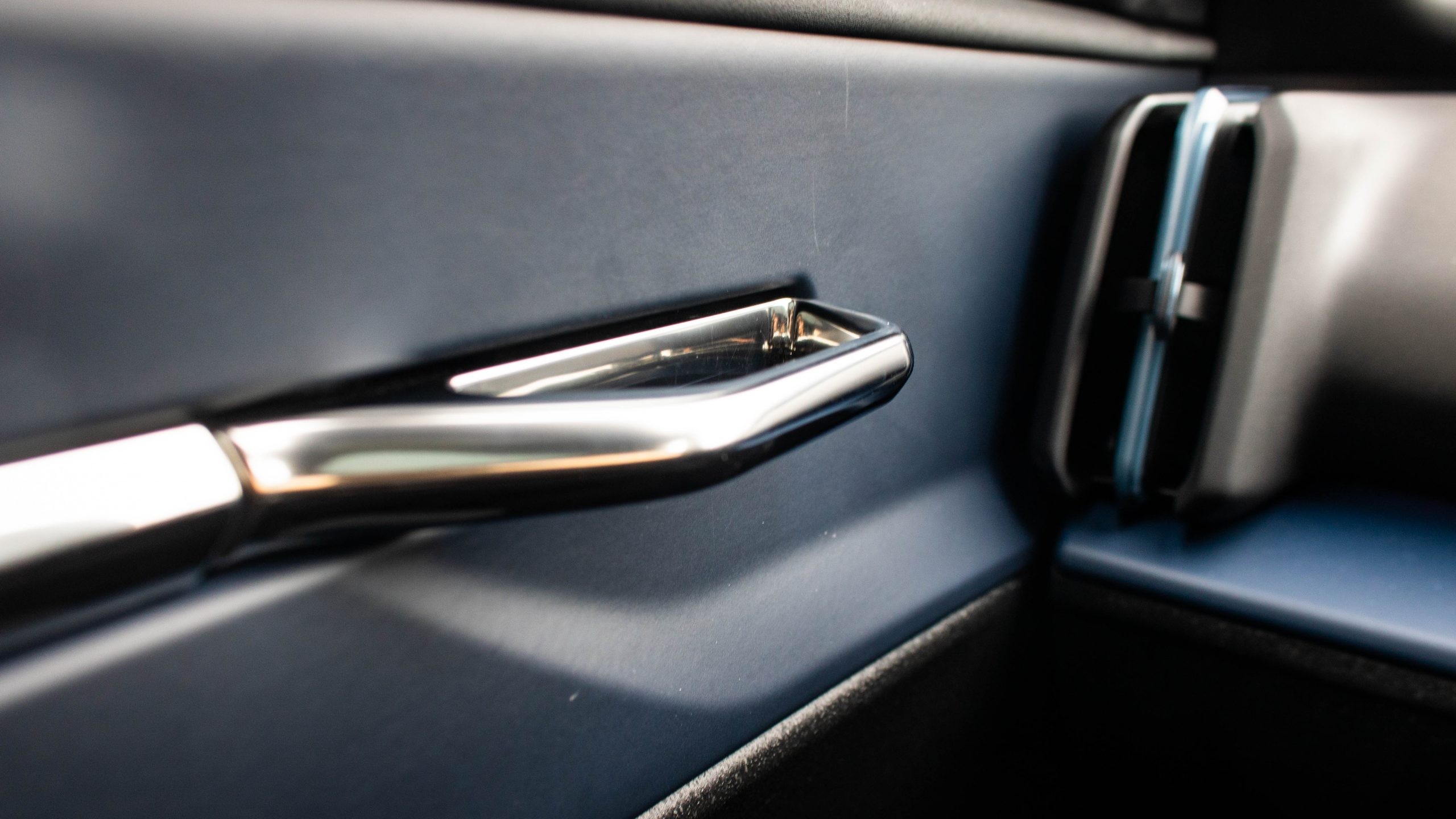 Img 7220 1
Img 7220 1
In terms of comfort, the Volvo EX30 offers a pleasingly thin-rimmed steering wheel wrapped in a remarkably soft material. The driving position is generally comfortable, and the front seats, while minimalist, are well-suited to the EX30’s intended use. However, the rear seats present a less comfortable experience. The low seat base results in a knees-up seating position, somewhat reminiscent of squatting. The rear passenger area is notably spartan, lacking amenities like cupholders or a center armrest, omissions that feel somewhat out of place given the vehicle’s price category.
Driving Dynamics of the Volvo EX30: Surprisingly Quick and Agile
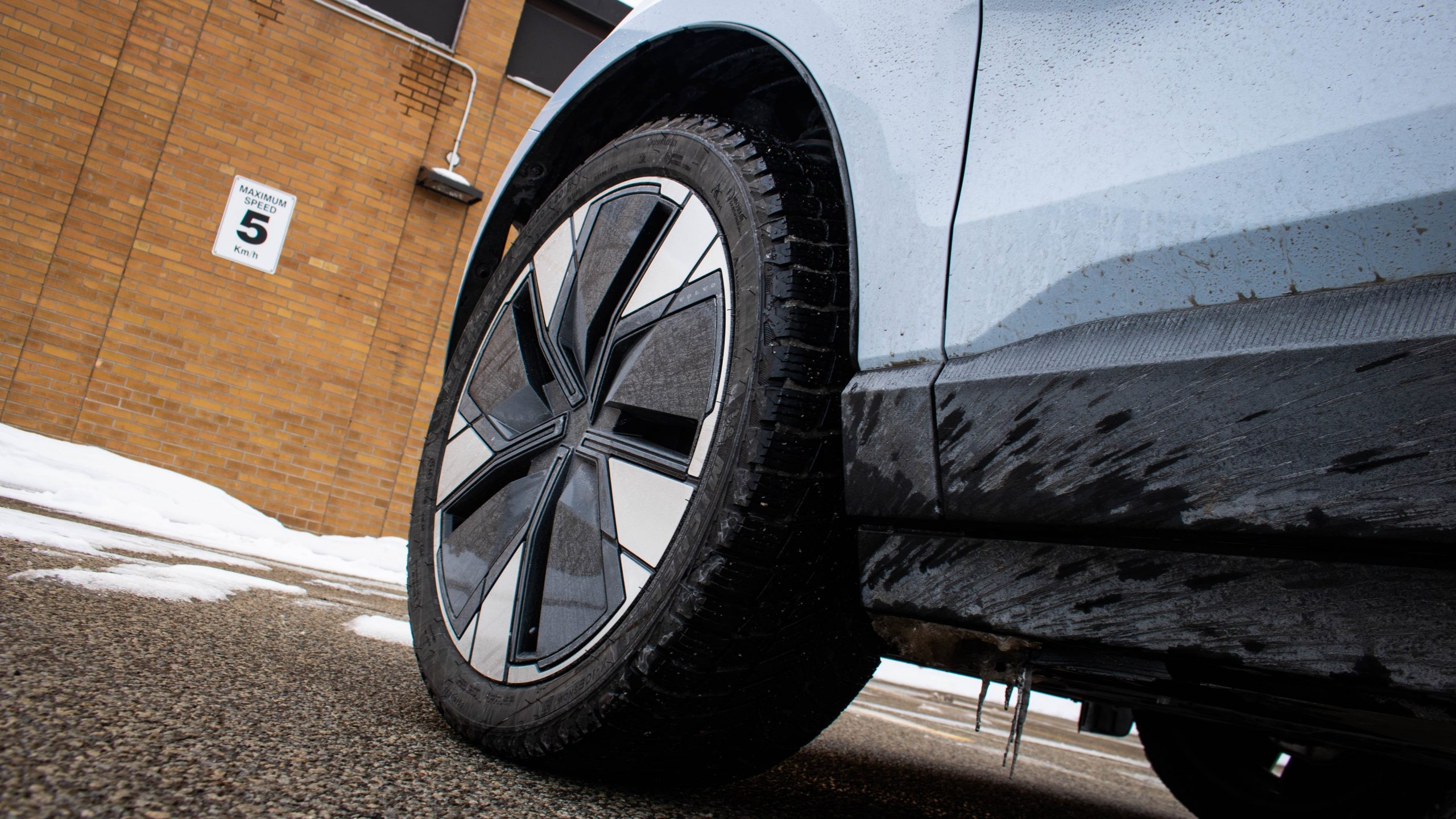 Img 7240 1
Img 7240 1
While the single-motor Volvo EX30 is not the performance flagship of the lineup, its performance should not be underestimated. With more horsepower than a base Mustang Mach-E and a relatively light curb weight of 3,859 pounds, even this entry-level model delivers brisk acceleration. Expect zero-to-60 mph times under six seconds. The instant torque characteristic of electric powertrains makes on-ramp merges and quick bursts of speed effortless and enjoyable. The brake pedal feel is also commendable, exhibiting a well-calibrated blend of regenerative and friction braking. The transition between these braking systems is virtually seamless, providing a firm and confidence-inspiring pedal feel.
The Volvo EX30’s ride quality in urban environments is consistent with its compact and nimble nature. Larger road imperfections are noticeable, but the suspension effectively absorbs and manages them. The upside is a refined handling of minor road surface irregularities, contributing to a sense of composed stability. The steering, however, is notably light, even in its most firm setting, to the point of feeling overboosted at lower speeds. This allows for effortless maneuvering in parking lots and drive-thrus, aided by the EX30’s tight turning circle. However, drivers seeking more steering feedback might find it lacking.
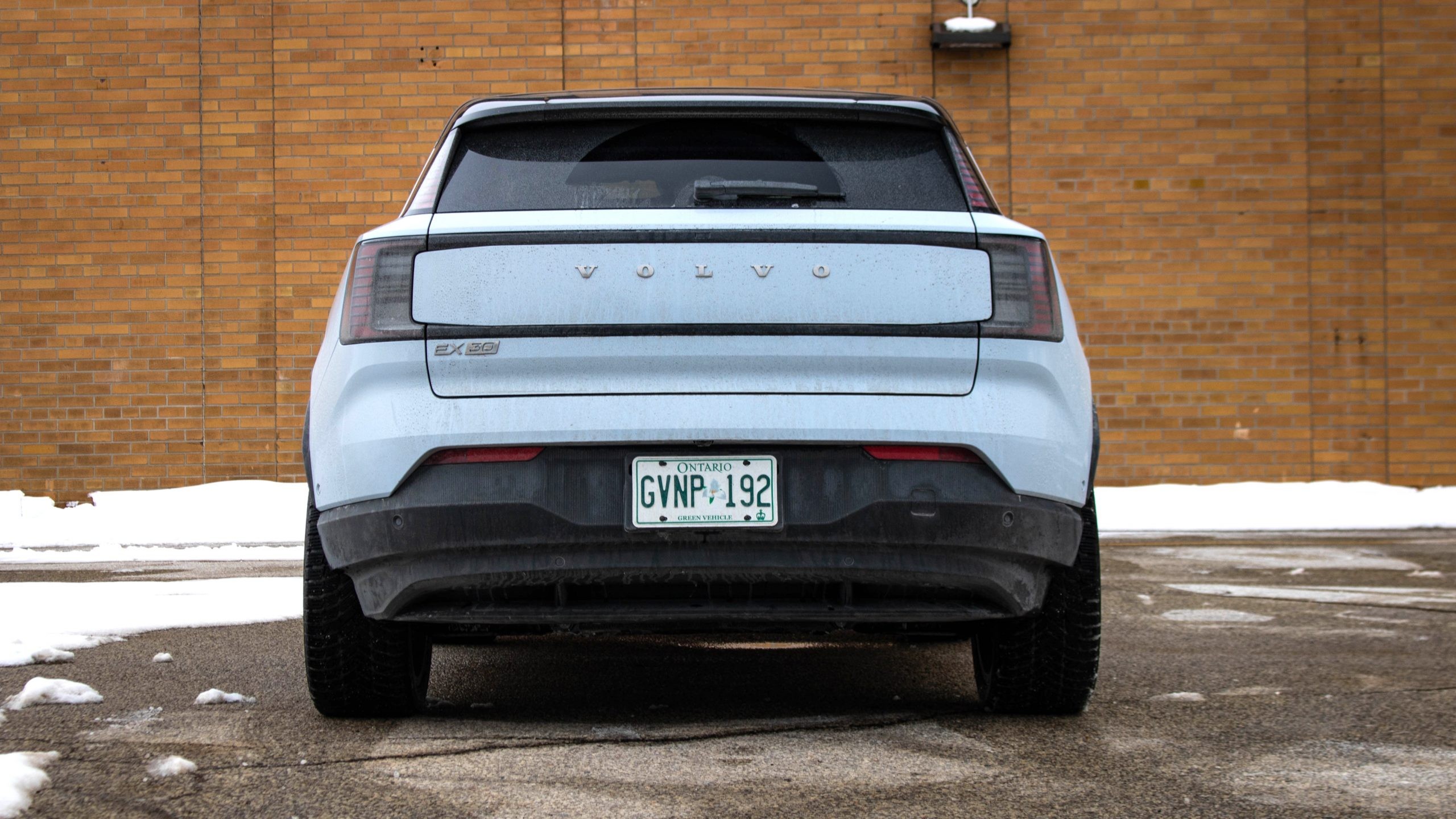 Img 7232 1
Img 7232 1
At higher speeds, the Volvo EX30 demonstrates improved steering feel. The ride, which is somewhat firm in the city, smooths out considerably on the highway. The steering weights up sufficiently to inspire confidence at highway speeds. It’s impressive how a vehicle shorter than a Corolla hatchback maintains such composed and planted handling at higher speeds, making it a comfortable and capable highway cruiser despite its size.
Technology and Electronics in the Volvo EX30: Minimalism Taken Too Far?
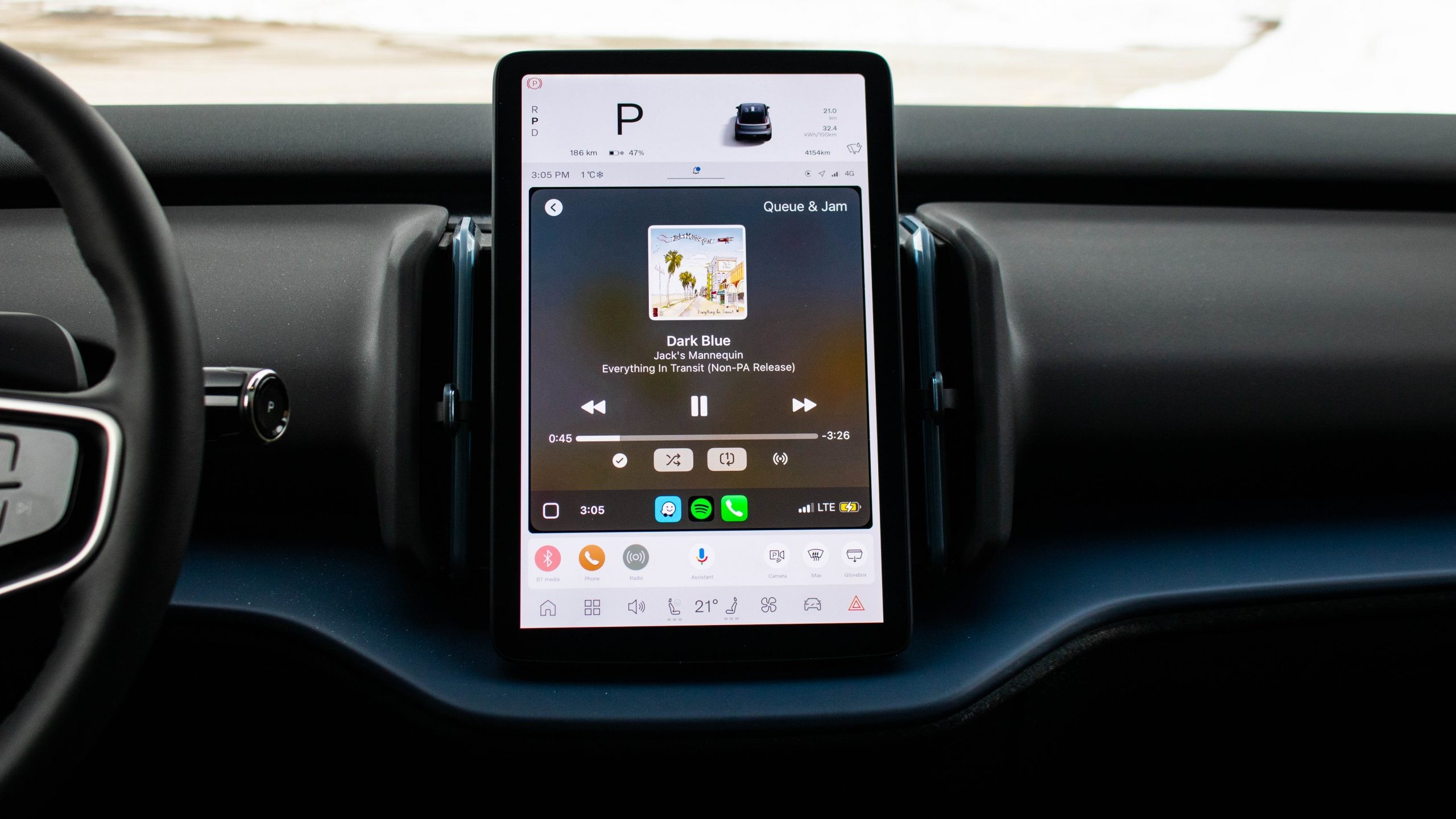 2025 Volvo EX30
2025 Volvo EX30
Beyond standard features like Apple CarPlay, Android Auto, wireless phone charging, and a comprehensive suite of driver assistance systems, the Volvo EX30’s technology leans heavily into minimalist digital controls, sometimes at the expense of user-friendliness. Notably, functions like the glovebox release and hazard warning lights are integrated into the central touchscreen. In fact, almost every vehicle function, from the speedometer to the mirror adjustments, is controlled via the touchscreen. This reliance on touchscreen controls can be distracting, and the driver monitoring system is quick to alert drivers who take their eyes off the road to interact with the screen. The placement of essential controls within the touchscreen raises questions about usability and driver attention, particularly for frequently used functions like heated seats.
Furthering the minimalist approach, Volvo appears to have taken inspiration from Volkswagen’s ID.4 window controls but simplified them even further. The EX30 features just two physical window switches on the center console, along with a capacitive touch slider to toggle between front and rear window control. The power seat adjustments are also unconventional, utilizing a cube-shaped controller and a button to cycle through adjustment options. The absence of a physical volume knob, pause button, or even a power button to turn off the car (it powers down only when locked) contributes to the sense of over-simplification. The “exit music” feature, which plays music when exiting the vehicle, is a quirky touch that may be enjoyable or irritating depending on personal preference and musical taste.
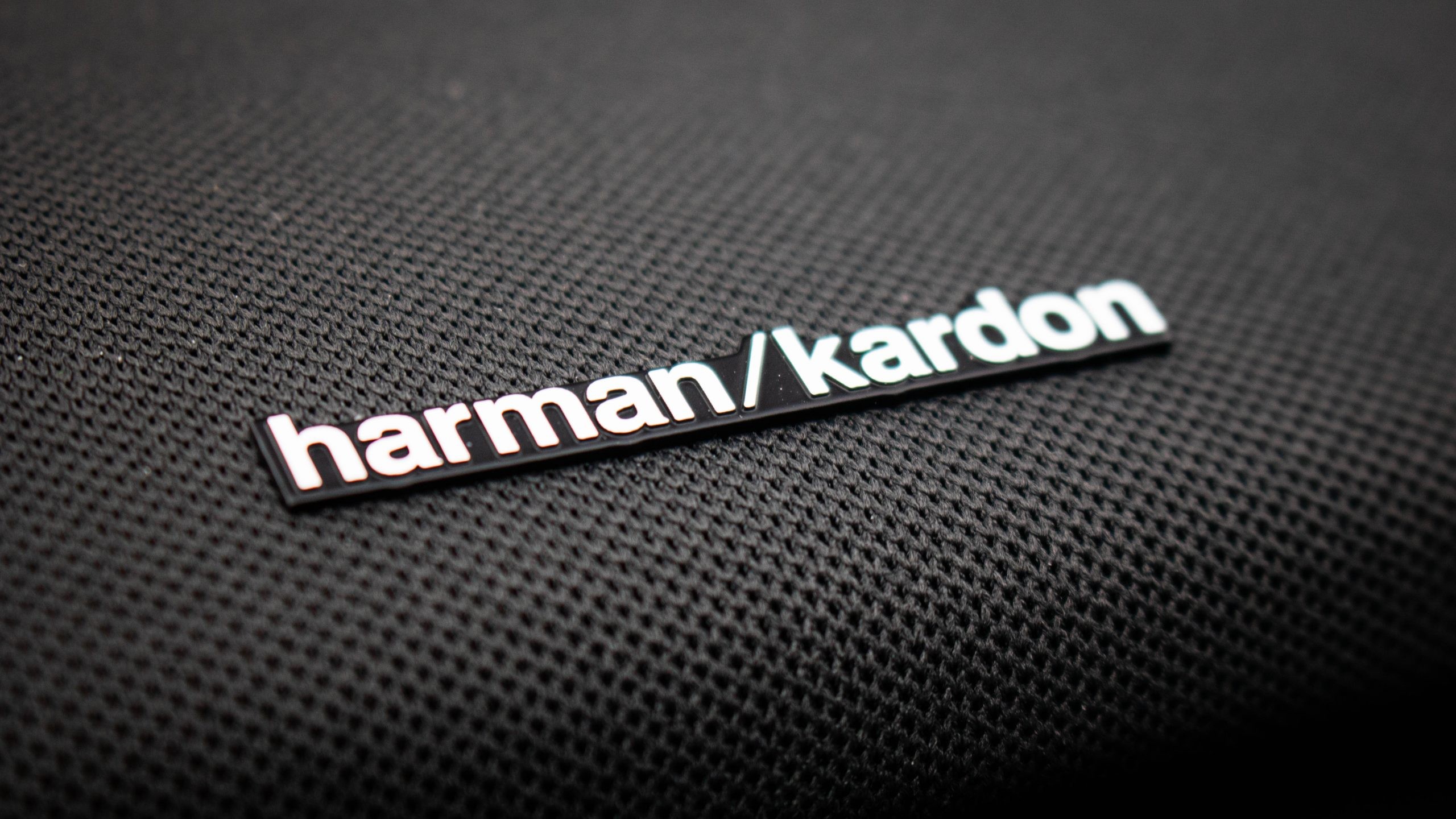 2025 Volvo EX30
2025 Volvo EX30
Our test vehicle was equipped with an optional Harman/Kardon sound system. Initially, the sound quality was underwhelming, marred by Harman’s Quantum Logic Surround processing. However, disabling this processing revealed a remarkably crisp and high-fidelity sound quality, although rear fill was somewhat lacking. For audiophiles prioritizing sound quality over sound staging, the optional Harman/Kardon system in the Volvo EX30 is a strong contender in its price range, provided the digital signal processing is adjusted for optimal performance.
Key Takeaways: Three Things to Know About the Volvo EX30 Single Motor
- Practical Storage: The door bins and console tray are thoughtfully sized to accommodate items like MacBooks and canvas bags, enhancing everyday practicality.
- Usability Challenges: The minimalist design approach results in a user interface that can be frustrating and unintuitive, requiring a learning curve and potentially causing distraction.
- Exit Music is Standard: Prepare for the car to play music every time you exit and lock it, a feature that is either a fun quirk or a potential annoyance.
Does the Volvo EX30 Fulfill Its Mission?
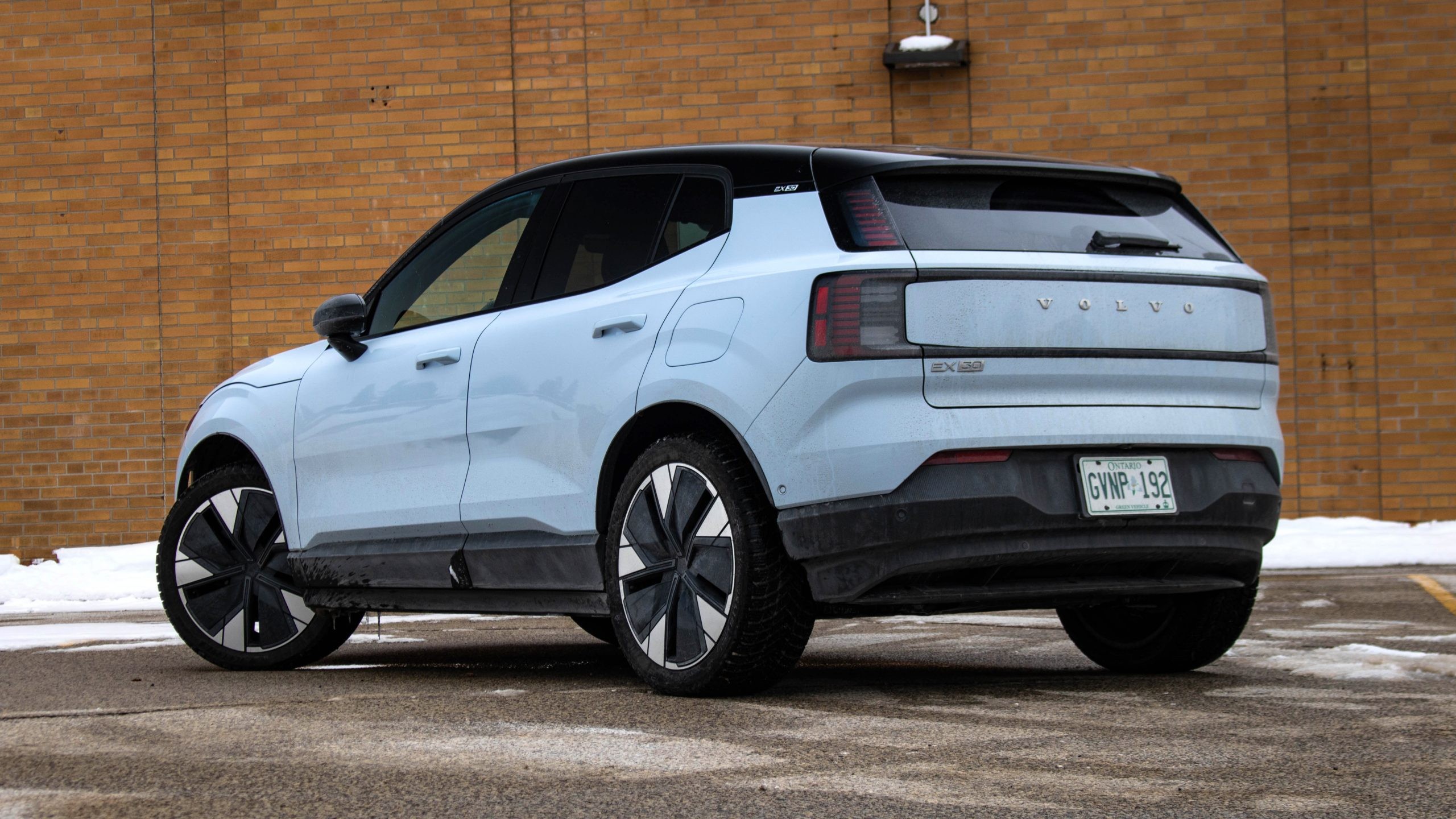 2025 Volvo EX30
2025 Volvo EX30
Assessing whether the Volvo EX30 successfully achieves its intended purpose is somewhat complex, particularly as U.S. pricing for the single-motor model remains pending. Canadian pricing for the single-motor EX30 starts at $56,470 CAD, while our well-equipped test vehicle reached $61,870 CAD. Converting to USD at current exchange rates, this translates to approximately $39,512 for the base model, slightly above the initially projected $37,000 target. If Volvo can maintain competitive pricing in the U.S. market, the base EX30 could present a compelling value proposition. However, with the Ford Mustang Mach-E now starting in a similar price range, the competitive landscape is challenging.
The Volvo EX30 single-motor’s minimalism, while aesthetically striking, sometimes feels like a deliberate simplification that detracts from user experience. It is a genuinely enjoyable EV to drive, boasts attractive styling, and offers commendable comfort for front-seat occupants. However, the electronic interface and control system can be frustratingly unintuitive. Even after familiarizing oneself with the digital controls, their implementation remains cumbersome and occasionally distracting, making the car feel more complicated and less user-friendly than it ideally should be, even for tech-savvy individuals. Whether a new car should be intentionally designed to be slightly annoying is a valid question, and for some, the answer may be no.
Conclusion: Volvo EX30 – Stylish Minimalism with Usability Trade-offs
Volvo’s entry into the subcompact electric crossover segment with the Volvo EX30 is undeniably stylish and offers an engaging driving experience. However, its commitment to minimalism, particularly in its electronic controls and interior features, may be excessively austere for some drivers. While the Volvo EX30 excels in many areas, potential buyers should carefully consider whether they are willing to accept the usability trade-offs inherent in its minimalist design philosophy in exchange for its compact size, electric powertrain, and distinctive Volvo styling.
Top graphic credit: Thomas Hundal
